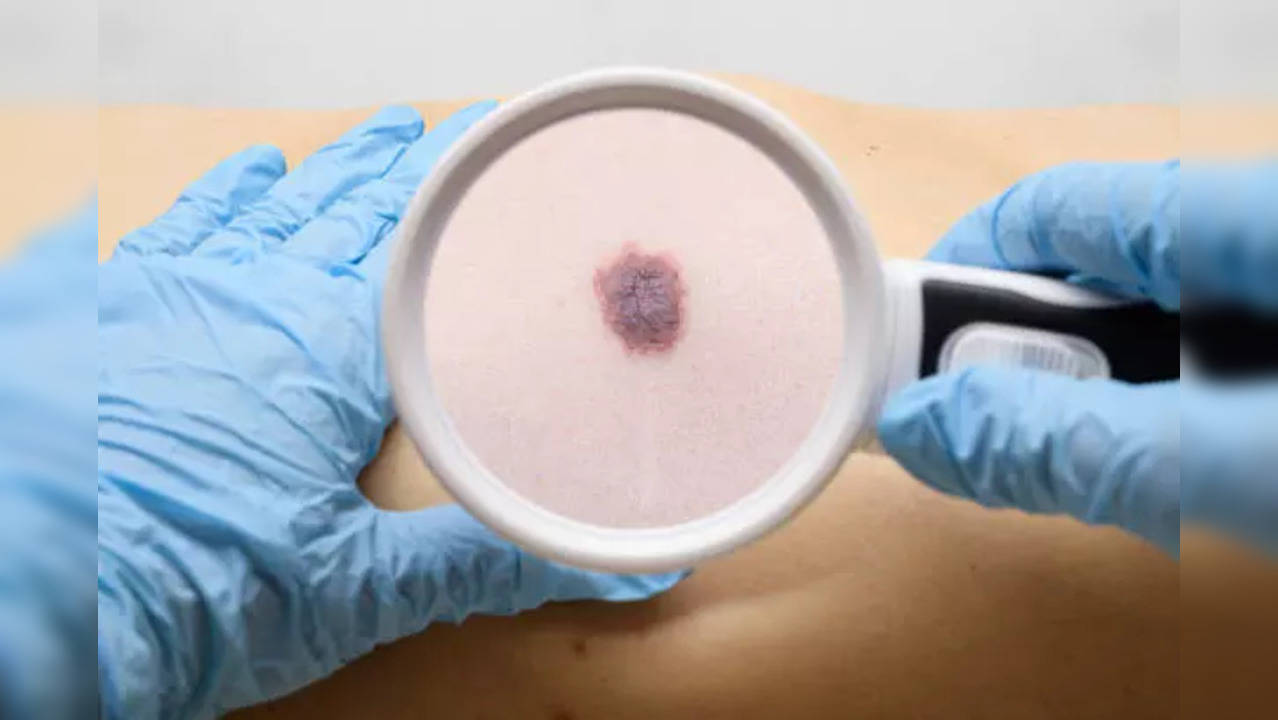4 Signs of Skin Cancer Other Than An Abnormal Mole You Should Take Seriously
3 minute readPublished: Friday, May 19, 2023 at 1:15 am

New Delhi: Across the world the number of skin cancer cases is rapidly increasing and doctors say anyone can get it, even though the risk increases as you get older. Even though most people think skin cancer is very easy to spot, the earliest signs can be very subtle. According to the American Academy of Dermatology Association, performing regular skin checks at home is extremely important. Not only it helps you catch anything abnormal, but also gives you an insight into looking for signs and symptoms which you might otherwise be normal. Signs of skin cancer One of the most obvious signs of skin cancer is an abnormal-looking mole. A spot that grows or changes slowly can be one of the most common signs of melanoma. However, there are a few more symptoms you need to check. A waxy bump Doctors say one of the most common warning signs of skin cancer is a change in the skin, especially a new bump or a sore that does not heal. It may begin as a shiny, or waxy lump, which would also bleed sometimes but does not go away. According to health experts, the waxy bump could be an early-stage basal or squamous cell skin cancer. According to the American Academy of Dermatology Association1, a hard bump on your eyelid may signify rare skin cancer called sebaceous gland carcinoma, which starts in oil glands. A dry patch Many people dry, scaly patches on their skin known as actinic keratoses, which are caused by exposure to sun. Doctors say keratoses is a precancerous skin growth that can turn into a common type of skin cancer, squamous cell carcinoma2. If you try to moisturize the dry patch and it does not go away, it can be a sign of cancer. Oozing lesions Even though at first, skin cancer may appear as a nodule, rash, or irregular patch on the surface of the skin, these slowly begin to form a crust and ooze or bleed easily. Doctors say as the cancer grows, the size and shape of the lesion also grow, forming basal cell carcinoma. These lesions do not heal and continue to bleed or ooze like a chronic wound. Red or purple lesions The pink, red, or purplish lesions look harmless, and painless, and are often mistaken for other common skin lesions. However, instead of healing, they quickly grow bigger within days if you expose your skin to the sun too much. According to Cancer Treatment Centers of America, the red or purple coloured lesions, also known as Kaposi sarcoma, often develop on the head or neck and usually begin in the blood vessels. Disclaimer: Tips and suggestions mentioned in the article are for general information purposes only and should not be construed as professional medical advice. Always consult your doctor or a dietician before starting any fitness programme or making any changes to your diet.